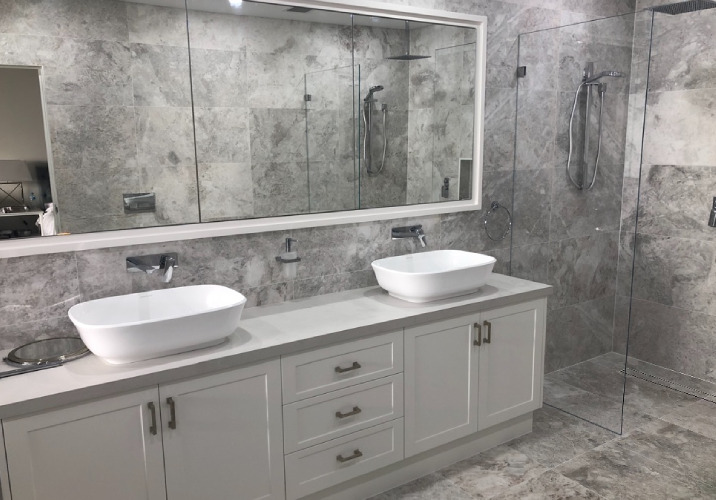If your washing machine is not working like it used to, the problem could be as simple as needing a good cleaning. If you find stains, patches of colour or your clothing look dingy; it might be your washing machine telling you it needs some attention. Cleaning your washing machine is easy, and it can save you a repair call.
How often should you clean a washing machine?
The answer to this question depends on how much you use it. The dirt and grime in your clothing have to go somewhere, and it can get caught in the filters, inlets and outlets, and pipes. Soap scrub builds up and can act as a trap for dirt. Cleaning your washer every six months will keep your clothing and your machine fresh and clean.
Some signs that your washing machine is in desperate need of a deep clean is a musty smell in your supposedly clean clothing. If your machine smells like dirty socks, then you need to clean it. If the inlets and outlets are clogged, it can interfere with the machine’s functioning by blocking water flow. This can lead to more costly repairs later. If this happens, one of the key signs is that soap might not be rinsed all the way out.

Materials and tools
Here are the tools that you will need:
- Spray bottle
- Microfiber cloth or sponge
- Old toothbrush
- Bottlebrush
When it comes to what to use to clean a washing machine, you have several options. You can buy a washing machine cleaner that is formulated specifically for this purpose. Many people choose to use more natural products, such as vinegar and baking soda. The best washing machine cleaner is one that removes the soap film. When you clean a washing machine with vinegar, you need to make sure to rinse it well so that your clothing does not smell like vinegar.
How to clean a washing machine
Before we get into the cleaning process, you need to check to see if your washing machine has a self-clean cycle. You can use that if it has one, but if it does not, you can do the washing machine cleaning using this simple process.
- Run a hot cycle. The first thing to do is run a regular cycle on hot, adding 60 mL of distilled white vinegar or cleaner instead of laundry soap. Add it to the detergent dispenser. This will not harm your machine, but it will prevent bacteria and mildew.
- Scrub the inside. Add vinegar or cleaner to the spray bottle and spray the inside of the drum. Use the old toothbrush and sponge to scrub the drum. The old toothbrush can be used to clean the cracks, crevices, and gaskets.
- Run one more empty load. Now, add another 60 mL of vinegar to the dispenser or sprinkle some baking soda directly in the drum. Run another cycle of hot water.
- Check the inlets. Check the inlets and outlets for build-up. Spray them with some vinegar or cleaner. You might try using a bottle brush to clean as much as you can.
- Wipe the outside. Spray the outside of the machine and the inside of the door. Wipe it down with the sponge. Use the toothbrush to clean around the hinges.
- Clean the filter. Take out the filter, run it under hot water and gently clean it with the toothbrush. Be careful not to damage it. Replace it into the machine.
- Dry the drum. Use the microfiber cloth to dry the drum or leave the door open to allow it to air dry.
Contact local plumbers
Front loader vs. top loader
Cleaning a front loader and cleaning a top loader is slightly different. The above instructions are for a top loader. When cleaning a front-loading washing machine, it is a good idea to consult the manual for instructions before proceeding. You can start by running a cycle with a cleaner or vinegar as you did in the previous section’s steps.
Dirty filters are a common contributing factor to a front-loading washer that is not cleaning properly. Also, remove and clean the soap dispensers and fabric softener dispensers with hot, soapy water. Rinse them with vinegar or allow them to dry in the sun to help prevent mould.
How to avoid getting a scrub build-up
The best way to clean a washing machine is to take measures to prevent it from getting dirty in the first place. Eventually, you will need to clean it, but you can lengthen the time between washing machine cleanings by taking a few steps.
- Use less detergent in your loads
- Avoid overloading your washing machine to allow water to drain freely
- Use liquid detergent or dissolve the powder in water before running a cold water load
- Store detergent in an airtight container and break up any clumps before adding the powder to the load
- Occasionally run an empty load with just detergent and hot water

How to hire a plumber
Hopefully, your washing machine will be working correctly after a good cleaning, but if it is not, then it might be time to call a licenced plumber. You might discover that there is another problem as you are cleaning the machine. If you need to call a plumber, make sure that you hire someone who has the proper qualifications.
Licencing and qualifications
Each state has its own licencing and qualifications for plumbers. They must also hold a national certificate in plumbing. Plumbers must complete an apprenticeship program, and they may receive advanced training. Ask about your plumber’s qualifications to work on your washing machine before you hire them.















